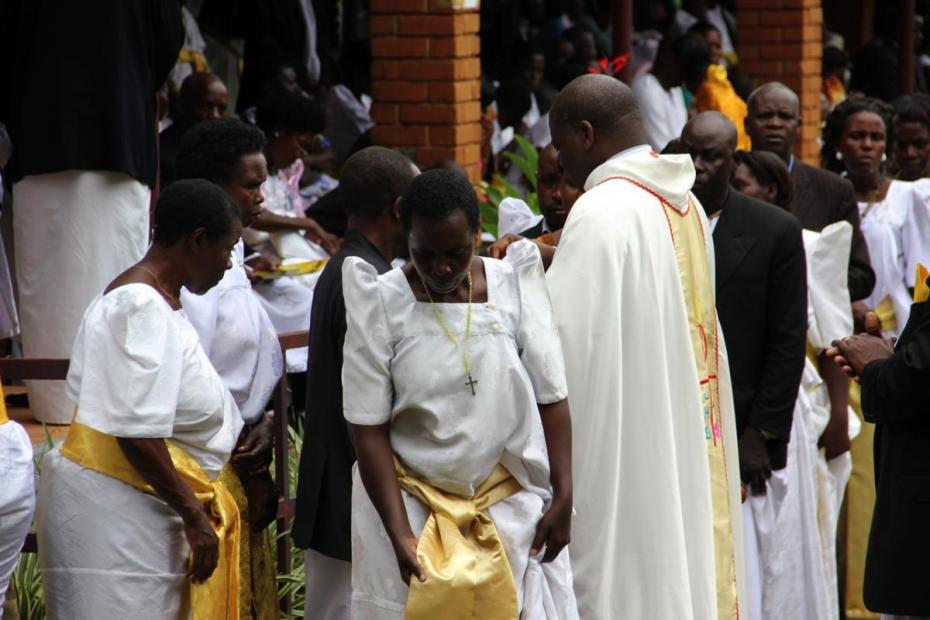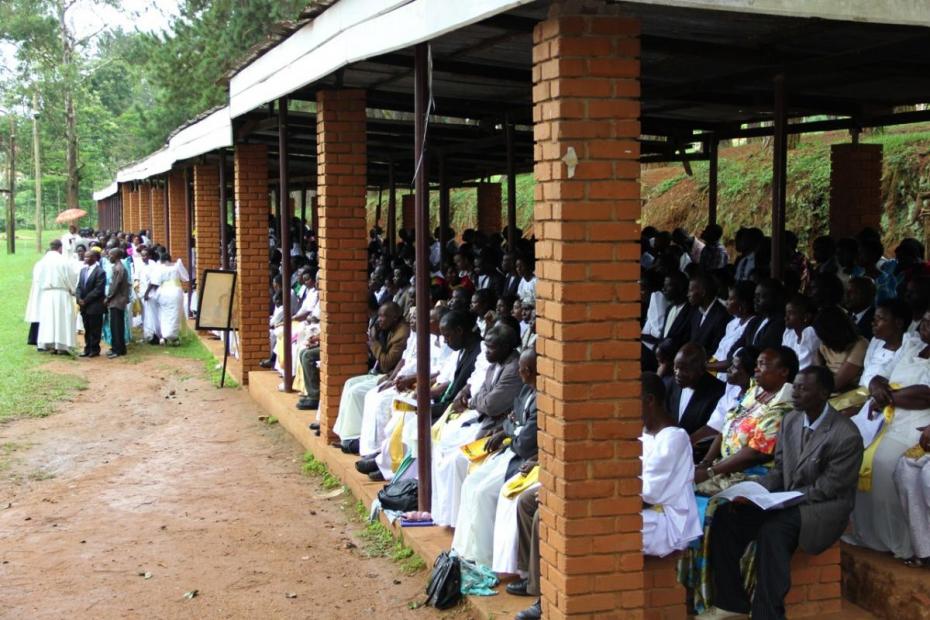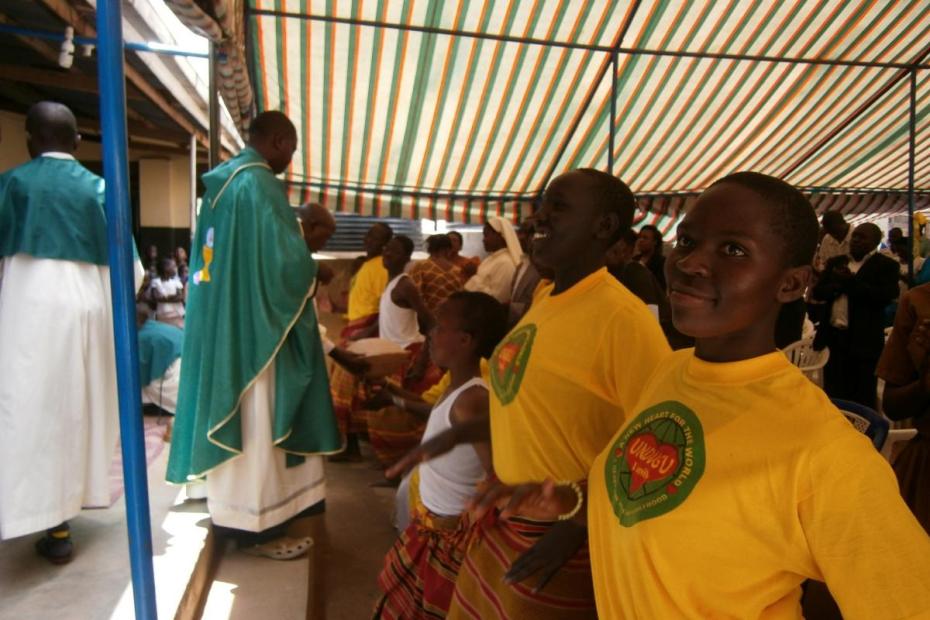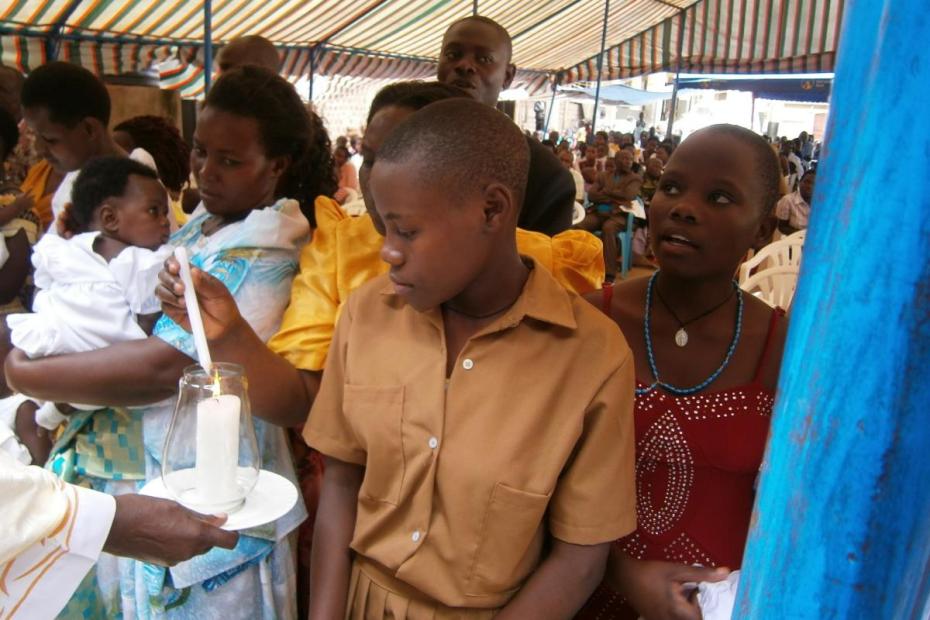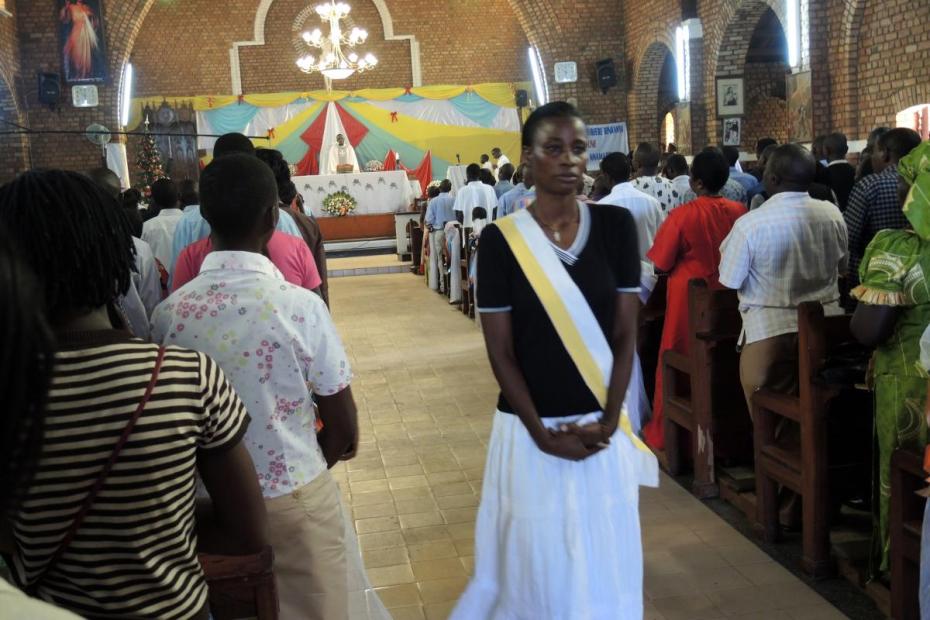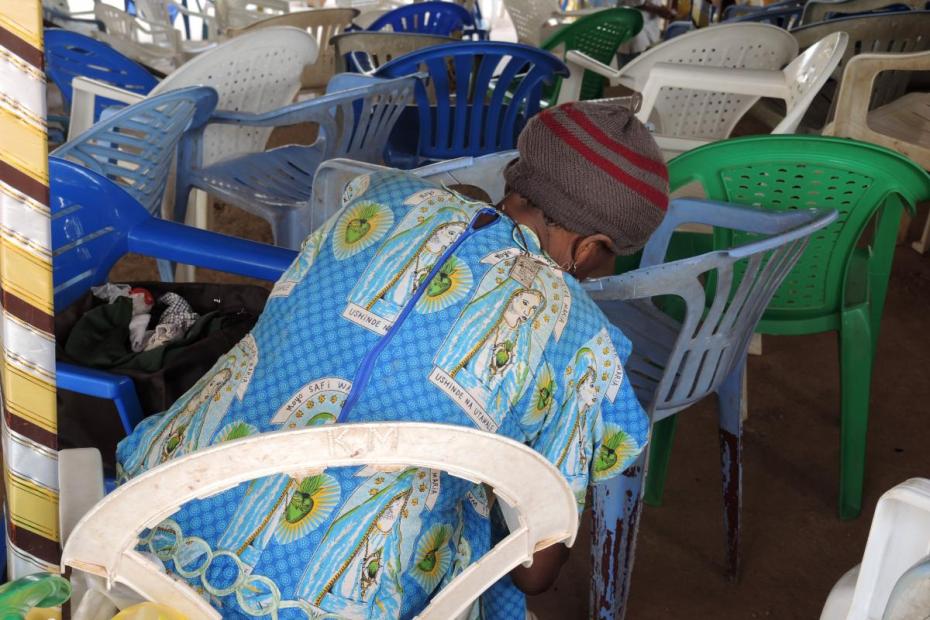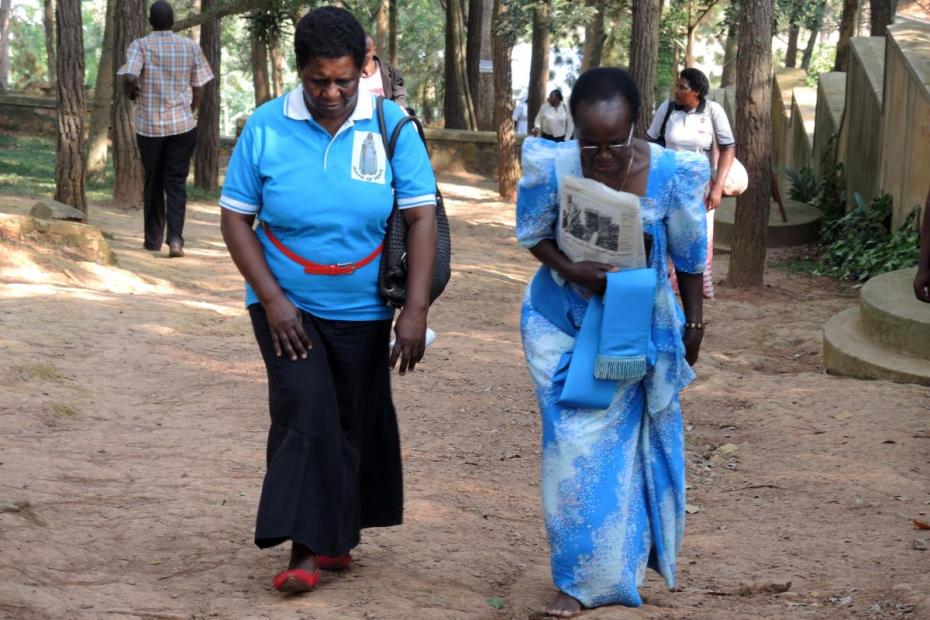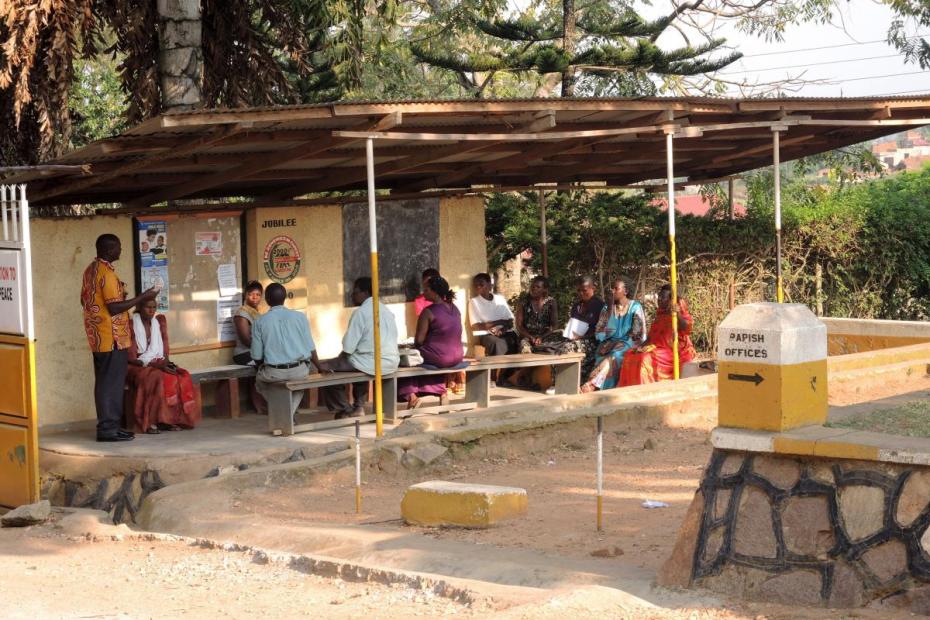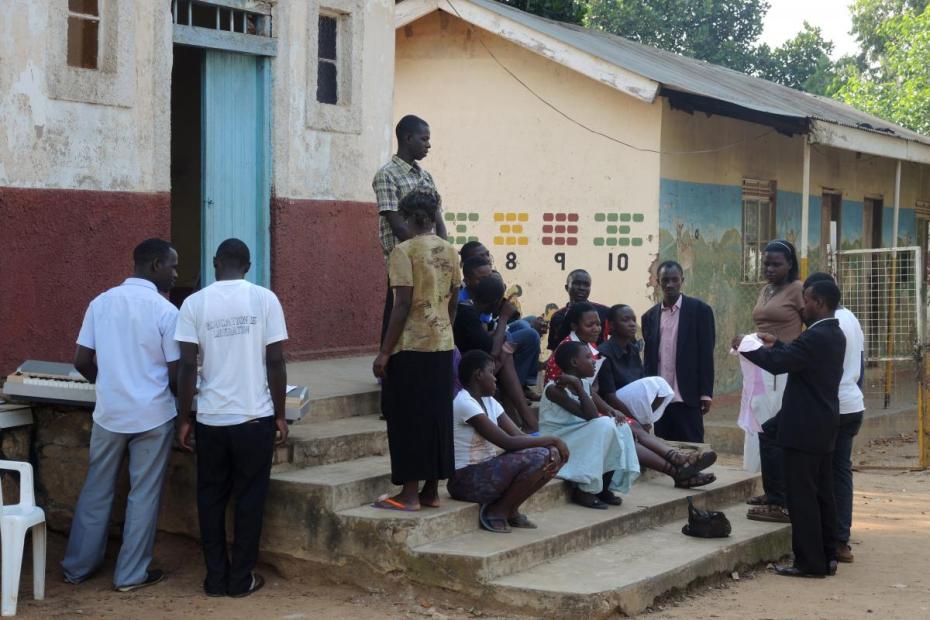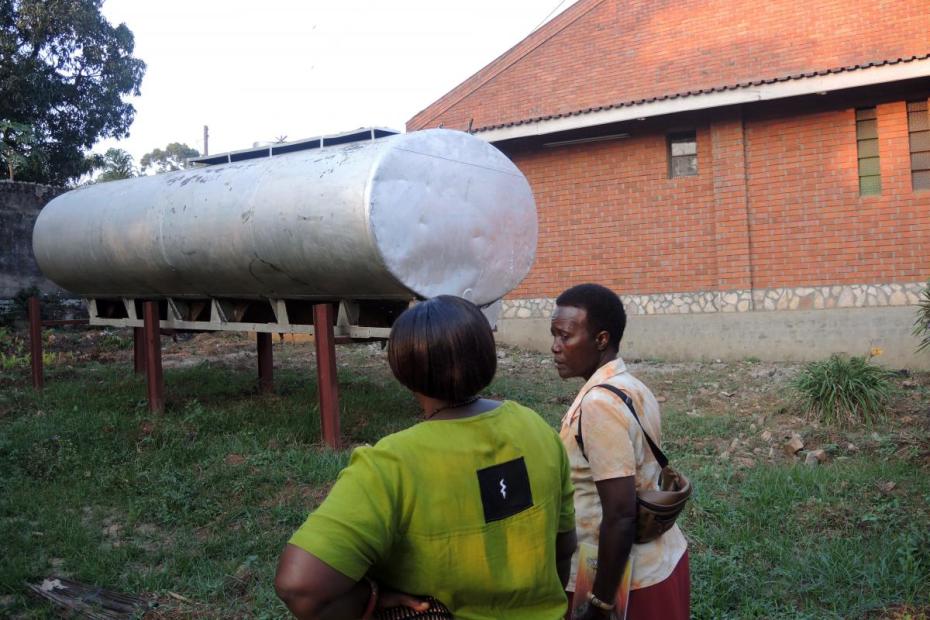The Church in Uganda is home to many Catholic societies, and parishes are full of organizations that promote development and shared Christian life. A men’s guild in a parish had a scheme to promote rural agriculture by purchasing bulls, and then at Christmastime making the meat from those bulls available to members at beneficial prices. One interviewee highlighted his participation in Wekembe, a new microfinance initiative that goes to individuals or small “solidarity” groups of neighbors. Other parishes have credit unions.
Women’s guilds, such as the women’s guild at St. Charles Lwanga parish, Jinja Karoli, actively pray together, and also engage in social service, such as repurposing an old truck delivery tank to store captured rainwater to provide running water for the neighborhood down the hill from the church.
The Legion of Mary, said to be the largest and most popular association in the country, is organized into small groups of 10-20 persons each. A Legion of Mary member described her goal in the association as first being about purifying her soul so that it is subsequently possible to help purify others’ souls. Her group prays together, using scripture. They visit the sick and those Catholics who are known to be “declining in religion” and not receiving sacraments. They comfort the sick, and to encourage the inactive to come to church. They report at their meetings about their visits, and share with the priest what they saw so that the priest will know who to visit as well. They also visit neighbors from other religions.
A Legion of Mary youth group, childhood Legionaries, is composed of boys and girls. Girls described wearing a yellow skirt, white shirt and scarf, and a red sash. As a group, they recite the rosary for those in need in the parish, especially for the intercession of Mary, and volunteer to clean the church.
Xaverians, a Catholic youth equivalent to Boy Scouts and Girl Scouts, organizes youth for devotional prayer, moral formation, and small-scale national development initiatives.
The constellation of Catholic organizations constitutes “a social milieu defined by religious practices,”1 that holds Catholics together and encourages those who might waver, as is evident in the Legion of Mary practices. The community is designed to keep people engaged in a whole faith community. This community-building contrasts to Protestants’ emphasis there on individual conversion.
- 1Paul Kollman, “Generations of Catholics in Eastern Africa: A Practice-Centered Analysis of Religious Change,” Journal of the Social Scientific Study of Religion (2012) 51 (3): 417. Kollman writes about it as a historical phenomenon in the missions, but what is interesting here is how that tendency asserts itself today. These lay solidarity groups that watch over each other stand as a counterpoint to also burgeoning individual, one-time experiences of conversion at places like Mt. Sion Bukalango.
